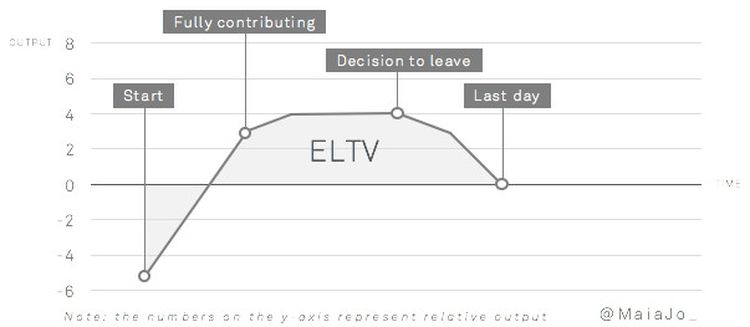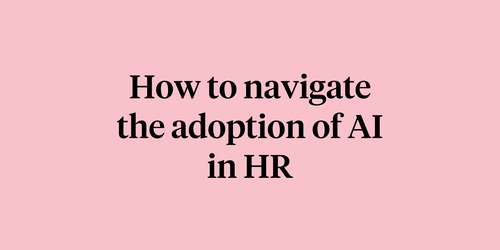
Written by

Founder & CEO, Culture Amp
I was on a panel in San Francisco last year where a question was posed from the audience about who HR should report to.
My fellow panelist, Laurence Coburn, CEO of DoubleDutch, gave a refreshing answer. Paraphrasing, it was:
“I don’t like HR reporting to my CFO because my CFO is there to manage the risks of my company. I don’t want my HR to manage risk; I want them to take risks. Reporting directly to me gives them the space to do that.”
I couldn’t agree more with the sentiment that HR must focus on taking risks.
People and culture is so much more than glorified payroll
I'm not saying HR can disregard risks. You want to be assured of an environment where there is no bullying, discrimination, or other behaviors that can lead to lawsuits, poor culture, and low morale. Naturally, you have to ensure your people are paid promptly and the correct benefits are being paid on their behalf.
But in terms of creating a successful modern company, this stuff is table stakes.
Great organizations recognize that HR is more than a glorified payroll function. The real work is in leadership and development – it's in creating new ways of communicating, interacting with, and growing your people.
So much of the value of any organization today sits inside the head of your people. There has never been a time when HR can add more value and deliver a true competitive advantage.
The ROI of human capital
Maia Josebachvili, VP of People and Strategy at Greenhouse has a brilliant and simple visual to describe the ROI of human capital.

The X-axis represents time, from the start date to the day the person leaves. The Y-axis represents individual output and the value that an employee adds.
It takes a certain amount of time for a new hire to onboard, which is a steep learning curve. At this point, employees are creating little value for the company. Eventually, they ramp up and get to their full contribution. Once a decision is made to leave, it tapers off again until the last day, when output and value are sub-optimal.
Your HR Department – People & Culture is a better term – should be tasked with thinking of innovative ways to lift that curve and create more value for longer. Can you onboard somebody faster so that they are able to get up to speed more quickly? Can you lift their potential in the organization, train them and upskill them so that they are more successful and fulfilled in their job and thus produce more effectively?
Moving from black hat to white hat thinking
To lift that curve, an organization has to be willing to experiment and explore, looking for ways to maximize rather than limit potential. I look at it as the difference between black hat and white hat thinking.
Black hat thinking focuses on avoiding risk, which is great if you have a risk that you need to avoid. But white hat thinking is all about creating value. That’s the sort of thinking we need in the HR space.
People and Culture needs to shift their mindset from black hat – let's make sure we don’t make any mistakes – to white hat, which is, how do we maximize the value that we can create through our people?
A big part of this shift is a more nuanced approach to risk and return in HR.
Thinking about risk vs. reward in People and Culture
If you think of a scale where at one end of the spectrum we have “disciplined” (low risk, guaranteed result), and at the other end of the spectrum we have “agile” (accepting risk for a potentially higher reward), different parts of your HR organization can and should be at different points along the scale.
When it’s not a matter of life or death, I think you should generally err on the side of willingness to take risks, give up control over the outcome and strive for a new and better result.
We are a pretty agile company here at Culture Amp, especially when it comes to People and Culture. But when it comes to something like payroll, or data security, we operate 100% at the disciplined end of the scale. In other areas such as our learning and development initiatives, we have a very high appetite for risk.
There needs to be an ongoing conversation around the risks and the potential for outsize returns. For the majority of HR functions, the potential returns are huge, and the risks are small or manageable.
No two words are more destructive than “Best Practice”
In thinking about risk in HR, one of my pet hates is the term "best practice."
No two words are more destructive for HR than “best practice.” Fundamentally, the greatest value that HR can add is to build a true competitive advantage for the company from people and culture. But by definition, it’s impossible to find an advantage over your competitors if you adopt exactly the same practices as them.
When dealing with people and company culture, it’s pointless to try and find one thing that everybody else is doing and call it “best practice.” Would you talk about the "best practice" food to eat? If Italian is currently the most profitable, does that mean it’s better than every other food and the only cuisine any restaurant should serve? Of course not.
It is always a great idea to learn from other people and what they are doing well. But it's a really bad idea to think there is only one right way to do something. One of the biggest challenges is getting an organization comfortable with some uncertainty and getting out of the “it works for everyone else” mindset.
People are the real work
The best People and Culture and HR teams understand that people are not a fungible resource that needs to be attached to the real work – they are the real work. They understand that there are huge opportunities today to build competitive advantages in people. And they understand that to do so, the aim is not to minimize volatility and failures but to maximize the opportunity for outsized gains.
That’s why I believe so strongly that HR must focus on taking more smart risks.


